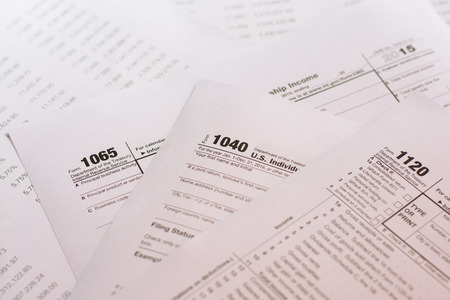Introduction: Why Tax Brackets Matter Emotionally
When most Americans hear the words “federal income tax brackets,” they immediately think of numbers, percentages, and maybe a little bit of paperwork stress. But beneath these numbers lies a complex web of emotions that can shape how people save, spend, and plan for their futures. Tax brackets aren’t just lines on a chart—they’re psychological signposts that can trigger pride, anxiety, ambition, or even frustration. Whether you’re a diligent saver or an enthusiastic spender, your place on the tax bracket ladder can affect the way you view your financial choices and goals. In this article, we’ll explore how federal income tax brackets serve as more than just fiscal guidelines—they actually influence the way Americans feel about money, success, and their own financial identities.
Behavioral Responses to Moving Between Tax Brackets
Americans often make financial decisions not just based on their income, but on how close they are to crossing into a higher federal income tax bracket. The mere anticipation or fear of entering a new tax bracket can trigger a variety of behavioral changes among both savers and spenders. These responses are deeply rooted in the desire to optimize take-home pay, minimize tax liabilities, and maximize benefits from deductions and credits.
Timing Bonuses and Extra Income
One common behavior is strategic timing of bonuses or extra income. Many employees negotiate with their employers to receive year-end bonuses in January instead of December if they are close to moving into a higher bracket. This tactic delays the additional income to the next tax year, potentially keeping them in a lower bracket for the current year and reducing their overall tax bill.
Impact of Bonus Timing by Tax Bracket
| Tax Bracket | Bonus Received in December | Bonus Received in January | Potential Tax Impact |
|---|---|---|---|
| 22% | Might push income into 24% bracket | Keeps income in 22% bracket for current year | Possible savings by deferring bonus |
| 24% | Might push income into 32% bracket | Keeps income in 24% bracket for current year | Larger tax savings possible by deferring bonus |
Year-End Deductions and Spending Adjustments
The anticipation of entering a new tax bracket also motivates Americans to accelerate deductible expenses at year’s end. For example, charitable donations, business purchases, or medical expenses might be fast-tracked in December if an individual expects their taxable income to rise. This strategy aims to reduce adjusted gross income (AGI) and avoid moving into a higher tax rate.
Typical Adjustments Made Before Year-End
- Charitable Giving: Donors rush to make contributions before December 31st.
- Retirement Contributions: Maximizing 401(k) or IRA deposits to decrease taxable income.
- Medical Expenses: Scheduling elective procedures or purchasing needed prescriptions before year-end if nearing deductible thresholds.
- Business Purchases: Small business owners may buy equipment or supplies before January to claim deductions this year.
This interplay between psychological perception of tax brackets and actual financial behavior underscores how the U.S. tax code shapes everyday decision-making. Savers tend to prioritize long-term reductions in taxable income, while spenders may adjust short-term outlays based on bracket thresholds. Both groups demonstrate that the fear or anticipation of crossing into a new bracket is more than just a numbers game—it’s a major driver behind real-world financial choices.
![]()
3. Perception of Fairness and Its Impact on Motivation
For many Americans, the way federal income tax brackets are structured is more than just a numbers game—it’s deeply tied to their sense of justice and financial motivation. When people perceive the tax system as fair, theyre more likely to feel positive about participating in it, which can directly influence their willingness to save, invest, or spend.
Understanding the Fairness Factor
The idea of fairness in taxation is subjective and often colored by political beliefs, personal experience, and media narratives. Some see progressive tax brackets—where higher earners pay a larger percentage—as a reasonable way to share the national burden. Others interpret these brackets as punishing success or discouraging upward mobility. This perception plays a powerful role in shaping financial behaviors across different income groups.
Motivation to Save and Invest
When Americans believe that tax policies are equitable, they’re more motivated to save for retirement, invest in stocks, or put money aside for college funds. The logic is simple: if the system seems balanced and just, individuals are more willing to play by the rules and make long-term plans. On the flip side, if people feel penalized for earning more or sense that loopholes only benefit the wealthy, their drive to save or invest can drop sharply.
Spending Habits and Economic Participation
The perception of fairness also spills over into spending habits. Those who view tax brackets as unfair may be less likely to spend freely, opting instead to withhold discretionary purchases or seek ways to minimize taxable income. This can dampen overall economic activity. Conversely, when taxpayers trust that the system treats everyone fairly, theyre often more comfortable spending, knowing their contributions support public services and infrastructure.
In short, Americans’ perceptions of tax fairness serve as a crucial psychological lever that influences whether they choose to save diligently, invest boldly, or spend confidently within the economy.
Tax Brackets and Financial Anxiety
Every year, as tax season approaches, Americans from all walks of life brace themselves for the stress and uncertainty that comes with navigating federal income tax brackets. This stress is not distributed equally—different income groups experience varying degrees of anxiety, largely driven by where they fall within these brackets and the psychological barriers created by bracket thresholds.
How Tax Bracket Thresholds Trigger Worry
For many Americans, the mere mention of “moving into a higher tax bracket” sparks concern. The fear of losing a larger portion of hard-earned income can lead to decision paralysis, second-guessing financial choices, and even avoidance behaviors such as delaying raises or year-end bonuses. Bracket thresholds act as invisible lines in the sand, making people feel as though a small increase in income could have outsized negative consequences—a concept known as “bracket creep.” In reality, only additional dollars are taxed at the higher rate, but the perception of losing more money often causes disproportionate worry.
Comparing Anxiety Across Income Groups
| Income Group | Main Source of Anxiety | Common Reactions |
|---|---|---|
| Low-Income (<$40k) | Fear of owing taxes or missing out on refunds/credits | Delaying filing, seeking free tax help |
| Middle-Income ($40k–$120k) | Worry about moving into higher brackets and losing take-home pay | Stress over deductions, careful planning |
| High-Income (>$120k) | Anxiety about large tax bills and complex filing requirements | Hiring professionals, exploring advanced strategies |
The Ripple Effect on Spending and Saving Decisions
This anxiety doesn’t just affect mental well-being—it also influences how people manage their money. Savers may hold back on investments or contributions to retirement accounts for fear of triggering a higher tax rate. Spenders might accelerate purchases before year-end to maximize deductions. Both groups risk making decisions based on short-term tax avoidance rather than long-term financial health.
The psychological impact of tax brackets goes far beyond numbers on a page—it shapes how Americans feel about their money and their future. By understanding these anxieties, policymakers and advisors can better support taxpayers in making informed, confident financial choices.
5. Psychological Strategies to Navigate Tax Brackets
The stress of maximizing take-home pay without slipping into a higher federal tax bracket can be a real mental challenge for Americans. To deal with this, many savers and spenders rely on clever psychological strategies and practical planning techniques.
Framing Income Goals
A common mental trick is to set income goals just below the next tax bracket threshold. This “bracket awareness” helps individuals feel more in control, giving them a sense of accomplishment when they optimize their earnings or deductions to stay in a favorable bracket. It’s not just about making money—it’s about making smart money.
Timing and Deferral
Americans often use timing as a psychological and financial tool. Whether it’s deferring bonuses to the next calendar year or accelerating retirement account contributions before December 31, these moves provide a sense of agency over one’s tax outcome. It transforms tax season from an unpredictable event into something that feels manageable and planned.
Chunking Financial Decisions
Another popular technique is “chunking”—breaking down complex tax decisions into smaller, actionable steps. For example, rather than overhauling an entire financial plan, many focus on one deduction or credit at a time (like maxing out their 401(k) or donating to charity). This makes the process less overwhelming and more psychologically rewarding as each step brings visible progress.
Reframing Deductions as Rewards
Some Americans motivate themselves by mentally reframing deductions and credits as rewards for good behavior—turning tax-saving actions into positive habits rather than chores. Whether it’s energy-efficient home upgrades or contributing to a Health Savings Account (HSA), viewing these choices as “earning” benefits can boost follow-through.
Social Support and Professional Guidance
Finally, leaning on community—whether through online forums, family discussions, or professional advisors—provides emotional reassurance. Sharing experiences and tips with others facing similar tax pressures helps reduce anxiety and encourages proactive planning.
Tying It All Together
By combining these psychological tactics with practical strategies, Americans are better equipped to handle the pressure of optimizing their tax position—making smarter decisions not just for their wallets, but for their peace of mind.
6. Broader Societal Effects: Tax Brackets and Wealth Behaviors
Federal income tax brackets do more than influence individual saving or spending habits—they also shape broader societal norms and expectations. For many Americans, the structure of tax brackets plays a subtle but powerful role in defining what’s possible or desirable when it comes to personal financial achievement. The aspiration for upward mobility—a central pillar of the American Dream—is closely tied to how people perceive the impact of moving into a higher tax bracket. Some see advancing into a new bracket as a badge of success; others worry that increased taxes will erode the benefits of their hard work.
This dynamic affects not only individuals, but entire communities. When large segments of the population feel discouraged from striving for higher earnings due to fears of losing out to taxes, it can dampen entrepreneurial energy and innovation. Over time, this may reinforce economic divisions and limit social mobility, making it harder for families to break cycles of poverty or build generational wealth.
On a cultural level, tax brackets help shape collective attitudes toward wealth accumulation, risk-taking, and even charitable giving. In some circles, aggressive saving and investing is celebrated as a smart response to the tax code; in others, there’s resentment over perceived unfairness in how different groups are taxed. These perceptions feed into larger debates about equity, opportunity, and what it really means to “make it” in America.
Ultimately, the psychological effects of federal income tax brackets ripple far beyond annual returns or paycheck deductions—they play a part in shaping our shared vision of prosperity and fairness. As lawmakers consider changes to the tax system, understanding these wider impacts is crucial for crafting policies that foster both individual ambition and collective well-being.


